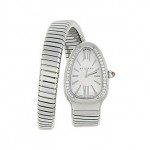In the Internet age, auctions might seem outdated and irrelevant. Yet auction houses continue to be effective marketplaces for everything from fine art to gourmet wine to bejeweled dog collars.
For those unaware, auction houses are intermediaries between buyers and sellers — the original eBay. If, for example, you want to sell a diamond-encrusted Barbie, you could contact a house and arrange for the doll to be auctioned. These arrangements involve setting your minimum selling price, transporting your item to the saleroom, settling on the commission amount to be taken by the auction house, and signing a contract.
Or, if you wanted to buy an original Steve Jobs’s Apple computer, you could work with a specialist from the auction house to find your dream work. Then, when the auction takes place, you would bid in-person, over the phone, or online and pay.
This specific example is actually on auction through Christie’s until July 9.
Some of the most prominent auction houses include Weschler’s, Potomack Company, Sotheby’s, Bonham’s, and Doyle New York. Weschler’s and Potomack Company are the only ones located in the Washington area. The other companies have sales rooms in New York City and across the world.
To become an auction buff, here are the key words to know:
Auctioneer – the trained professional who conducts the auction
Lot – an object or group of objects being exhibited in the auction
Sale number – a lot’s identification code
Provenance – the history describing the object’s chain of ownership since creation
Chattel – the physical goods of an estate, such as furniture and cars
Auction block – the object currently being auctioned
Paddle – the instrument bidders use to communicate their bid to the auctioneer
Bidder number – a bidder’s identification number used on the paddle
Reserve price – the pre-established, minimum amount the owner will accept
Hammer price – the amount of the winning bid
Buyer’s premium – the amount paid between the hammer and total purchase prices
Ring – the auction location
Whether you’re searching for that perfect Roman sculpture to complete your living room or Moscato to complement your favorite dessert, these terms will help you raise that paddle confidently. Check out a few upcoming events for the summer and happy auctioning.
Sotheby’s London
Château Pétrus 1967
Auction Date: June 20
Estimate: $10,000-$14,000
Sotheby’s London will offer a unique day for wine lovers to experience a taste of the Finest and Rarest Wines. This sale will feature extraordinary collections from Bordeaux and Burgundy to the Spanish Vega Sicilia. Wine lovers can enjoy a tour of wines from the 1960s, all the way to the 21st century. These exquisite wines will be available in bottles and magnums. Don’t forget to look out for the Château Pétrus 1967, a wine that will leave you wondering and wanting more. This wine is known by experienced wine tasters, who recognize it by its rich, sweet and complex taste. It has a lingering “sweet” taste with a low concentration and density.
Christie’s
Tubogas “Serpenti” quartz wristwatch by Bulgari
Auction Date: July 17
Estimate: $3,050 – $4,575
(£2,000 – 3,000)
This jewelry sale at Christie’s is sure to be huge. There are 262 lots in the sale, with pieces from designers, such as Tiffany & Co and Chanel to Van Cleef & Arpels. In particular is the “Serpenti” wristwatch from Bulgari that expresses the elegance that Bulgari stands for and is a design that is being revived by designers today. The specialists at Christie’s explain the watch has a silver dial with Roman numerals and a bezel set with diamonds. There is a pink sapphire crown with a five-jewelled quarts movement to a sprung bracelet and 22mm wide case. The dial, case and movement are all signed Bulgari. The wristwatch is an iconic model from the Bulgari collections and would be a perfect addition to one’s own collection.
- Original Apple Computer





